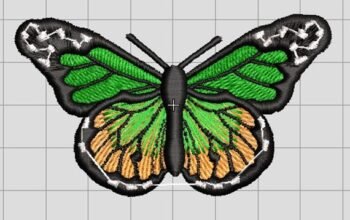The Husky Pitbull Mix: A Complete Guide to the Pitsky Hybrid
Combining the loyal, strong-willed nature of the American Pit Bull Terrier with the energetic, independent spirit of the Siberian Husky, the Husky Pitbull Mix (often called the “Pitsky”) is an intriguing and affectionate hybrid that has captivated dog enthusiasts worldwide. As with any mixed breed, the Pitsky inherits traits from both parent breeds, making it unique in temperament, appearance, and care needs. This guide dives deep into the fascinating characteristics, training requirements, health concerns, and lifestyle tips essential for raising a healthy, happy Husky Pitbull Mix.
Understanding the Origins of the Husky Pitbull Mix
The Pitsky is a recent addition to the world of designer dog breeds, born from a desire to blend the strength and loyalty of the Pit Bull with the athleticism and adventurous spirit of the Husky. Here’s a look at the lineage of both parent breeds:
- American Pit Bull Terrier: Often misunderstood, the Pit Bull is actually known for its loyalty, affection, and strong desire to please its owners. Originally bred for farm work and protection, the Pit Bull is highly intelligent and, when raised in a loving environment, can be a gentle and dedicated family dog.
- Siberian Husky: With roots in Siberia, the Husky is known for its stamina, work ethic, and sociability. Huskies are famously energetic and love being active, whether running, playing, or exploring. They’re also known for their independent streak, which can make them a bit stubborn but incredibly endearing.
When these breeds are combined, the Pitsky inherits a mix of physical traits and personality quirks from both lineages, resulting in a dog that’s both sturdy and agile, as well as affectionate and fiercely loyal.
Physical Appearance: What Does a Husky Pitbull Mix Look Like?
The Pitsky’s appearance can vary significantly, even within the same litter, since it can inherit a variety of features from each parent breed. Generally, a Pitsky is a medium-to-large dog with a muscular build and a height that ranges from 16 to 25 inches, and they typically weigh between 30 to 80 pounds.
Here are some defining characteristics that make the Pitsky a unique-looking breed:
- Coat Type and Colors: The Pitsky’s coat can be short like the Pit Bull’s or a bit longer and fluffier like the Husky’s. Coat colors can include black, brown, gray, red, brindle, or even a mix of several colors. Some Pitskies may even have the signature Husky facial markings or piercing blue eyes, adding to their striking appearance.
- Head Shape and Ears: A Pitsky’s head may lean toward the blocky shape of the Pit Bull, but it can also have a sleeker Husky-like appearance. The ears can vary as well, often appearing pointed like a Husky’s or more rounded like a Pit Bull’s.
- Eyes: One of the most striking features of a Pitsky is its eyes, which can range from brown to blue, and in some cases, they might even have one eye of each color (heterochromia), a common trait in Huskies.
The physical traits of each Pitsky are highly individualized, making them a visually captivating dog with a truly one-of-a-kind look.
Temperament and Personality Traits: A Complex Blend of Loyalty and Independence
The Pitsky is known for its unique combination of both affectionate and independent traits, making it a fantastic companion dog but also one that requires a bit of patience and understanding from its owner. Here’s a deeper look into the Pitsky’s personality:
- Loyal and Protective: Thanks to the Pit Bull genes, the Pitsky tends to be a loyal and protective dog. They form strong bonds with their families and are known to be affectionate, even cuddly, with those they trust. However, they can also be wary of strangers, which can make them excellent watchdogs.
- Energetic and Playful: The Husky influence brings a high level of energy to the Pitsky, making it a playful, fun-loving dog that enjoys an active lifestyle. They thrive on physical activities, whether it’s running, hiking, or participating in dog sports. Daily exercise is essential to keep them from becoming bored or destructive.
- Independent and Stubborn: Like their Husky parent, Pitskies can be stubborn and independent-minded, which may pose a challenge during training. They may not always respond immediately to commands, especially if they’re more interested in something else. Patience and consistent training methods are key when working with this breed.
- Intelligent and Trainable: While their stubbornness can be a challenge, Pitskies are also intelligent and capable of learning a variety of commands and tricks. Training sessions that are engaging, reward-based, and involve mental stimulation will help them focus and keep them interested.
Overall, the Pitsky’s temperament is best suited for active, patient owners who enjoy both the athleticism of a Husky and the loyalty of a Pit Bull.
Exercise Needs: Keeping Up with an Active Pitsky
Pitskies are high-energy dogs that require significant daily exercise to stay healthy, happy, and well-behaved. A typical Pitsky will need at least 60 to 90 minutes of physical activity each day. Here are some activity ideas to keep your Pitsky physically and mentally stimulated:
- Running and Jogging: The Pitsky’s stamina makes them an excellent running partner. If you’re an active runner, consider taking them along on your jogs to expend some of their energy.
- Hiking Adventures: Their natural athleticism and love for the outdoors make hiking an ideal activity for the Pitsky. They’ll thrive in environments where they can explore and take in new scents.
- Dog Parks and Playdates: Socialization is important for this breed, and trips to the dog park can offer a controlled environment for exercise and interaction with other dogs. Make sure your Pitsky is properly socialized to ensure positive experiences at the park.
- Mental Games and Enrichment Toys: Puzzle toys, obedience training, and agility courses can be excellent ways to stimulate a Pitsky’s mind. These dogs are intelligent and will become bored if they’re not mentally challenged.
Due to their exercise needs, the Pitsky is best suited for an owner with an active lifestyle or someone who can dedicate time to multiple daily exercise sessions.
Training a Husky Pitbull Mix: Tips for Success
Training a Pitsky can be a rewarding experience, but it requires consistency, patience, and creativity. Because they inherit both the independent nature of the Husky and the eagerness to please from the Pit Bull, training may require a balanced approach.
- Start Early with Socialization: From a young age, expose your Pitsky to a variety of people, places, sounds, and other animals. Early socialization helps reduce the risk of territorial behavior and ensures that your Pitsky grows up to be a well-rounded adult.
- Positive Reinforcement Techniques: Pitskies respond well to positive reinforcement training methods, which include rewards, praise, and treats. Avoid harsh punishment, as it can lead to fear and trust issues.
- Consistency is Key: Being consistent with commands, rules, and routines will help your Pitsky learn more quickly. Keep training sessions short, engaging, and focused, as they can become easily distracted.
- Focus on Recall and Basic Commands: The independent streak from the Husky side means recall training (coming when called) is crucial. Reinforce basic commands like “sit,” “stay,” and “come” regularly to keep your dog responsive and safe in various situations.
With regular training and positive reinforcement, Pitskies can develop into obedient, loyal companions that fit well within a structured household.
Health and Lifespan: What to Expect for Your Pitsky
The Husky Pitbull Mix generally enjoys a healthy lifespan of about 12 to 15 years. However, as with any mixed breed, there are a few health issues to be aware of that can affect both Pit Bulls and Huskies:
- Hip Dysplasia: This common joint issue can affect Pitskies due to their active lifestyle and genetics from both breeds. Regular check-ups and a balanced diet can help prevent or manage symptoms.
- Eye Issues: Huskies are prone to certain eye conditions such as cataracts, which may be passed down to Pitskies. Regular eye check-ups can help catch any potential problems early.
- Allergies: Pit Bulls are known to be susceptible to skin allergies, which might also be present in Pitskies. Regular grooming, a high-quality diet, and allergy management can reduce discomfort and maintain healthy skin.
- Hypothyroidism: This thyroid condition is occasionally seen in Huskies and may affect some Pitskies. Symptoms can include weight gain, hair loss, and lethargy, which can be managed with medication.
Preventative care, regular veterinary check-ups, and a nutritious diet will help ensure your Pitsky lives a long, healthy life.
Ideal Living Environment: Is the Husky Pitbull Mix Right for You?
The Husky Pitbull Mix thrives in a home where its exercise and mental needs are met consistently. They are generally not suited to apartment living unless they have frequent outdoor activities and space to release their energy. Here’s what to consider if you’re thinking of bringing a Pitsky into your home.
- Read More: Ipe Decking for Sale
- Read More: Ipe Decking for Sale
- Read More: Ipe Decking for Sale




